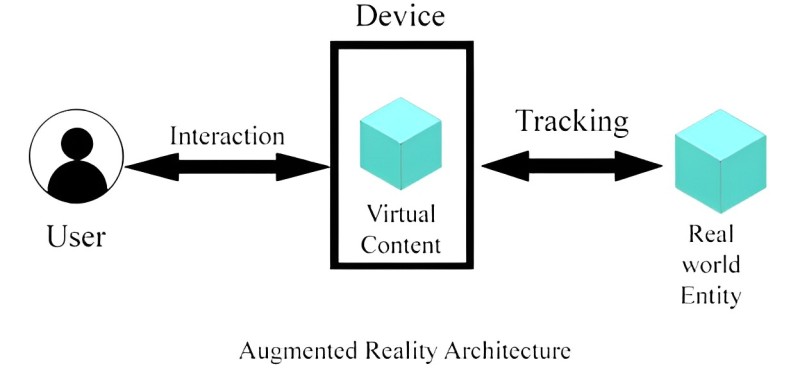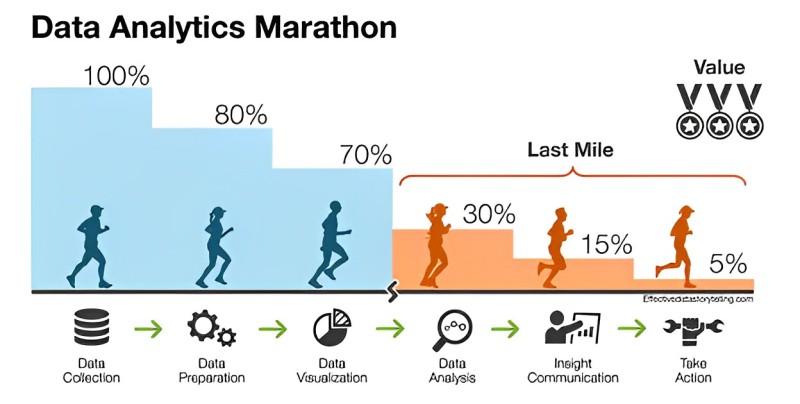Mastering the data-driven future relies on cultivating specialized talent adeptly harnessing the promise of accelerating technologies like AI and machine learning to reshape raw information into breakthrough business insights.
The war for analytical talent makes it imperative to Hire Tableau Developers skilled in emerging technologies like AI and machine learning to meet accelerating business needs.
The expertise driving analytics innovation forward focuses less on commoditized reporting of historical patterns and more on advanced applications like predictive modeling, personalized recommendations, intelligent consolidations, and real-time insight flows.
Is Tableau Developer a Game-Changer for AI and Advanced Analytics?

Winning the escalating war for analytical talent requires understanding key skills compulsory for sparking continuous discovery and pivoting hiring profiles accordingly.
Here we will share a talent blueprint detailing core capabilities, go-to interview questions, and compelling incentives for engaging top Tableau developers to build the future of insights across data’s exciting evolution.
Developing AI and Automation Acumen
Tableau developers previously focused on elegantly presenting insights from business datasets now need fluency guiding data science and process automation initiatives exploring the art of the possible with emerging capabilities:
- Foundational fluency guiding requirements, prototypes, and guardrails implementations for AI solutions like forecasting models, personalized content, and predictive recommendations derived by algorithms requiring transparency and human interpretation.
- Programming literacy around Python data science toolkits like Pandas, TensorFlow, and PyTorch used in constructing pipelines preparing, training, validating, and managing machine learning models with Tableau visualizations providing final mile explainability.
- Workflow thinking harnesses robotic process automation (RPA) bots executing repeatable manual efforts around data collection, parsing, standardization, and consolidation to free analyst capacity toward judgment-intensive modeling and analysis projects.
Lead with open-ended scenario questions around emerging analytics use cases rather than narrow technical quizzes to assess forward-looking mindset during interviews.
Highlight day-in-the-life content showcasing automation and AI projects demonstrating the innovative opportunities candidates will engage in rather than dated reporting responsibilities.
Prioritize learners excited to ride the Microsoft Azure analytics evolution wave.
Architecting for Augmented Experiences

Static pixel-perfect dashboard design conventions fade against fluid augmented experiences blending visualizations, conversational interfaces, and predictive recommendations.
Dynamically tailored to each stakeholder surfaced proactively as insights warrant rather than awaiting pulls.
Tableau developers level up advisory capabilities leading this wave:
- Interactivity design skills apply triggers, actions, and adaptive formatting guided by rules, usage context, and events to personalize views automatically reflecting individual preferences and information needs in real-time.
- Conversational interface capabilities like natural language query, search, and narration weave interactive information discovery directly into applications through voice and text exchanges rather than solely passive parameterized reporting.
- Channel optimization dynamically publishes views matching analytical content to optimal media like mobile alerts, emails, collaboration portals, and even digital displays based on changing audience, urgency, and intended use case context rather than one-size-fits-all destinations.
Use assignment-style interview activities having candidates demonstrate examples of reimagined analytical experiences personalized for hypothetical stakeholders and use case situations.
Assess their vision, expanding future decisions and supporting creativity.
Safeguarding Data and Analytics Responsibly
Escalating data source diversity, streaming pace and reliance on automated algorithms require heightened governance to ensure continuous insights reliability:
- Data literacy goes mainstream through workshops democratizing essential concepts around statistical significance testing, uncertainty principles, algorithmic bias mitigation, and key basis of responsible data usage across enterprises to uplift citizenship.
- Risk control testing suites proactively assess biases, completeness gaps, and statistical anomalies in both internally managed and externally sourced data feeds using profiling suites, metadata analysis, and comparative benchmarking against qualified samples.
- Model governance protocols monitor for degradation in accuracy, inconsistent subgroup performance, and ethical compliance via explainability-based testing applied before productive deployment and continuously after launch to uphold standards at the population scale relying on algorithmic automation.
Explore analytical ethics scenario challenges during interviews assessing responses for balance across technical, business, and social imperatives.
Champion critical thinking on implications over simple compliance.
Incentivizing Talent for the Data-Driven Marathon

Because of the current talent shortage, retention is just as important as recruitment to maintain analytical superiority.
Learning and intentional innovation are more important to best-fit team members than compensation alone.
Autonomy, growth, and community incentives motivate Tableau developers to commit their futures to catalyzing the data revolution:
- Hackathon events tapping developers for blue sky ideation, building passion proofs-of-concept, and exploring trials around emerging tech capabilities foster autonomy reward creativity, and contribute to collective analytics advancement.
- Transition pathways help designers and reporting specialists reskill into new domains like conversational analytics, AI model development, and customer intelligence roles preventing skills obsolescence through funded education, sandboxes, and mentorships enabling growth.
- Peer technical community building inside organizations counters isolation through events like Lunch & Learns, online forums, and self-help workflows.
This allows people to share learnings, collaborate on problems, and gain recognition through internal social channels.
Cultivating Computational Creativity
Business logic encoded into workflows, models, and queries constrain possibilities for innovation by bounding exploration along defined statistical assumptions, historical patterns, and canned combinations.
But exponential data complexity and pace of change rewards new perspectives unlocking value through creative inquiry transcending past constraints.
Tableau developers now cultivate possibilities by applying computational creativity techniques like scenario simulations, generative adversarial explorations, and counterfactual projections to unlock refreshing vantage points:
- Experimental sandbox reporting projects new hypotheticals like disruptive partnership models, exponential demand growth, or adjacent category expansions.
Teams brainstorm implications through simulations unblocking assumptions.
- Generative adversarial approaches critique existing metrics by deliberately arguing inverted perspectives.
For example, contending wide confidence intervals deliberately undermine reliability claims forcing robustness improvements rather than accepting uncertainty casually.
- Counterfactual views reconstruct alternate realities depicting contrasting strategic paths to quantify opportunity costs of pivots taken or not.
For example, views quantify sales for abandoned products using demand assumptions and benchmarks to better evaluate contribution tradeoffs not immediately visible analyzing only actuals.
Assess creativity by posing hypothetical changes and evaluating candidate aptness proposing analytical approaches quantifying impacts, uncovering risks, and identifying possibilities through inversion practices. Seek cognitive flexibility.
Analytical Maturity Design
Demand for analytics easily outpaces teams’ capacity to supply tailored insights across every business priority without thoughtful scaling. While backlogs accumulate, spontaneous reporting becomes locked in spreadsheets.
Tableau developers architect evolution from basic governed analytics to continuous intelligence through expanding automation, APIs, and guided analysis:
- Migration pathways help teams graduate standard reporting from manual refresh spreadsheets into automated flows with dashboard delivery, trust controls, and reusability enhancing consistency and breadth of coverage through scaling.
- API toolchains transform manual one-off analyses into reusable applications allowing embedding interactivity and predictive guidance anywhere required across the business. Democratized mobility travels insights.
- Guided analysis templates, video tutorials, and embedded assistants allow novice users self-service access to trusted steps aiding exploration, alert configuration, and sharing to spread BI literacy at enterprise scope fueling an informed culture.
Discuss candidate visibility developing analytics maturity for organizations during interviews – assessing tone balancing vision and patience catering to all levels on the data fluency spectrum. Change takes thoughtful pacing.
Engineering Serendipity
Discovery rarely adheres to linear processes or convenient timing yet remains vital for uncovering disruptive opportunities and competitive threats while most analytics stays locked in rearview methods.
Data teams proactively engineer “serendipity” through tools promoting continuous peripheral vision:
- Proactive insight bots are configured to notify users when emerging statistical anomalies, outlier data stories, and correlation changes indicate disruptions by industry, market, and strategic initiatives warranting exploration beyond daily monitoring habits. Timely curiosity beats delayed hindsight.
- Comparative benchmark dashboards continuously background scan trusted external indexes around the sentiment, web platform economies, macro-economic signals, and other external indices flagging performance gaps and opportunity leads surfaced through open-ended vigilance to keep the competitive outlook fresh.
- Team profile matching algorithms connect people across groups based on past insight behavior, skill tags, and content relevance to facilitate introductions where collaboration potential exists.
Discovery thrives on building bridges between isolated perspectives.
Assessing comfort, deliberately engineering, and embracing unexpected analytical surprises qualify fit for creative growth. Serendipity skills beat waiting.
Operationalizing Institutional Knowledge
Subject matter expertise honed over years propels judgment elevating analytics from crude reporting into wise interpretation and counsel winning trust in strategy rooms. But reliance on heroes does not scale.
Tableau developers now operationalize tacit knowledge into transparent systems before institutional memory retires:
- Knowledge graphs map analytical DNA embedding relationships between data elements, metrics definitions, business logic, and strategic concepts linking siloed reporting into connected context models that new generations readily reference realigning efforts consistently.
- Analytical coachbots catalog common question patterns alongside proven response guidance allowing chatbots to inherit wisdom from seasoned staff scalably handling frequent inquiries while freeing talent energy towards complex unknowns requiring human dexterity.
- Insight templates codify best practice analysis blueprints across key strategic initiatives like product launches, pricing changes, and campaign outcomes for reuse across teams enshrining historically proven analytics.
Capture hard-earned intuition before experts move on. Transform collective intelligence into community advantages. Institutionalize knowledge responsibly.
Mentorship Bridges the Skills Gap
As technology disrupts corporate models, demand for advanced analytics far outstrips supply. However, official training programs progress slowly, even though demands remain severe.
Tableau developers bridge skill gaps by providing mentorship opportunities to develop needed capabilities in-house when talent cannot be recruited readily externally.
Informal mentorships cultivate niche analytics skills through ongoing guidance from experienced internal personnel collaborating directly with small teams on solving real initiatives:
- Hands-on upskilling on the job transfers working knowledge as veterans partner with small groups tackling capability gaps around data science, advanced visualizations, script automation, and dashboard interventions.
- Periodic milestone reviews help guide progress rather than fully autonomous exploration alone. This allows efficiently adapting support to overcome hurdles while still ensuring outcomes.
- Gradual independence empowering mentees to tackle pieces of analytics processes culminating in ownership of full solution flow allows sustainable transition once the engagement wraps.
Measure programs through mentee productivity exhibiting expanded skills on subsequent projects allowing strategic redirection of veteran analytics talent to the next areas of need. Homegrown talent builds institutional resilience.
Instilling an Analytics Culture
Sustained competitive advantage relies on ingraining analytics habits permeating across business units to uplift decision-making at the point of impact rather than being isolated within specialized groups.
But influencing cultural habits requires purposeful environmental cues making desired behaviors intuitively easy while inconvenient paths fade away.
- Default templates within common tools like spreadsheets, presentations, and emails embed graphs prompting visualization practices rather than accepting raw tables copied from reports. Frictionless self-service sticks adoption.
- Nudge notifications alert contributors to update reports, review recent changes, validate key assumptions, and consider caveats around analytics accessed before utilizing data. Prompts fertilize conscientious culture.
- Gamification leaderboards track usage metrics on content contribution, commenting, and sharing to motivate broad participation. Recognizing pockets of energy sparks movement peer-to-peer.
- Chatbots interactively teach and test basic concepts around statistics, data interpretations, and analytical ethics through conversational exchanges accessible on-demand for continuous learning. Knowledge grows dialogically.
Measure progress by reviewing tool adoption trends, alert response rates, participation distribution, and proficiency benchmarks before and after instilling nudges to cultivating the environment. Culture takes root within the fertile soil.
Fostering an Ethical Culture
Widespread data access and AI-powered automation necessitate business vigilance to protect analytics impacting decisions, perceptions, and opportunities by assuring transparency, fairness, and accountability.
However, check-box controls foster complacency in the absence of long-term cultural awareness. Long-term ethical excellence necessitates constant reinforcement:
- Immersive simulations personalize problematic scenarios such as algorithmic prejudice, profiling practices, and data exposure concerns, allowing participants to negotiate both technological and social justice imperatives at the same time. Navigating grey zones is regarded as wisdom.
- Ethics hours are open town halls for technologists and domain experts to debate issues, interpretation disputes, and precedent-setting decisions, democratizing decisions rather than putting the burden only on specialists.
- Controls that are proactive through recognition programs that seek ideas from different contributors outside of core analytics teams, R&D incentivizes new approaches boosting visibility, and smoothing opt-out controls around analytics touchpoints. Design benefits from empathy variety.
Assess public opinion toward transparency, useful AI applications, and ethical accountability as indicators of company priorities that balance innovation goals with societal concerns. Principles are the foundation of progress.
The future of analytics hangs on solving the enterprise talent squeeze.
While technical qualifications stay imperative, remember to evaluate candidates equally on soft skills indicative of passion, vision, and commitment to lifelong learning as technology continually evolves.
What other perspectives or priority capabilities should analytics hire tableau developers emphasize to land and retain capable of leading lasting innovation?
Tell us in the comments below!





